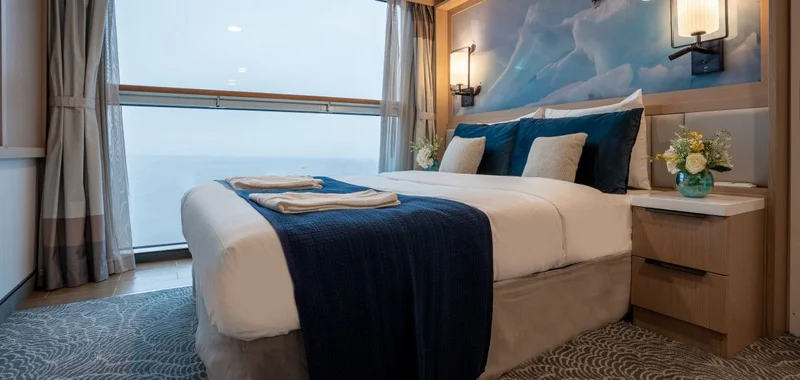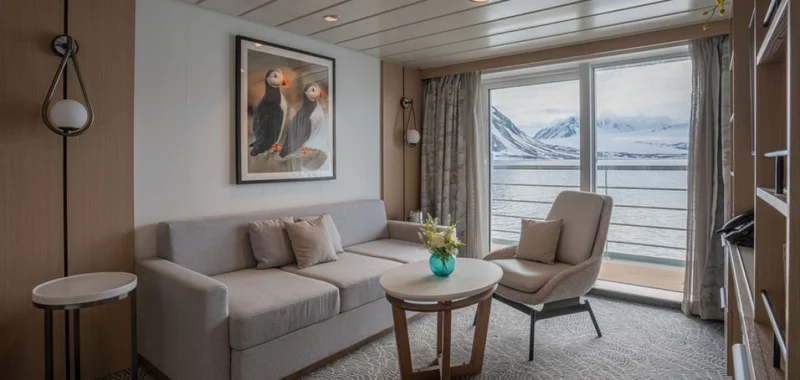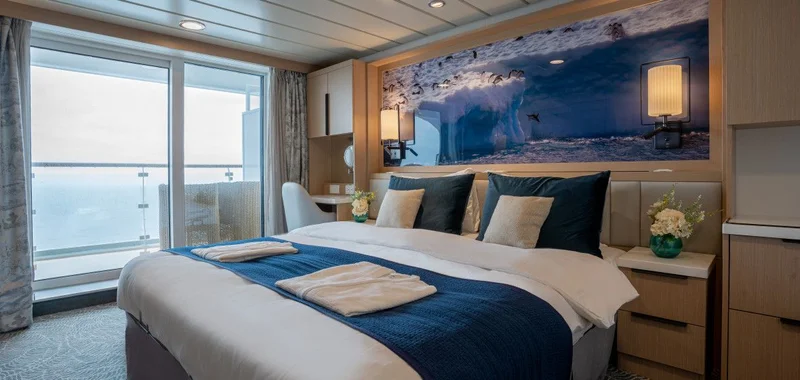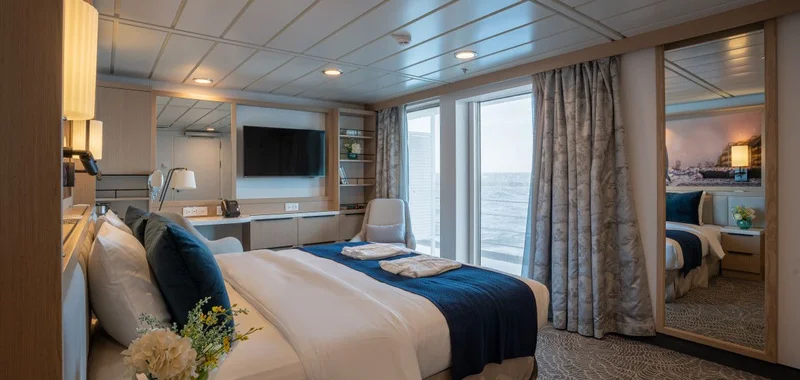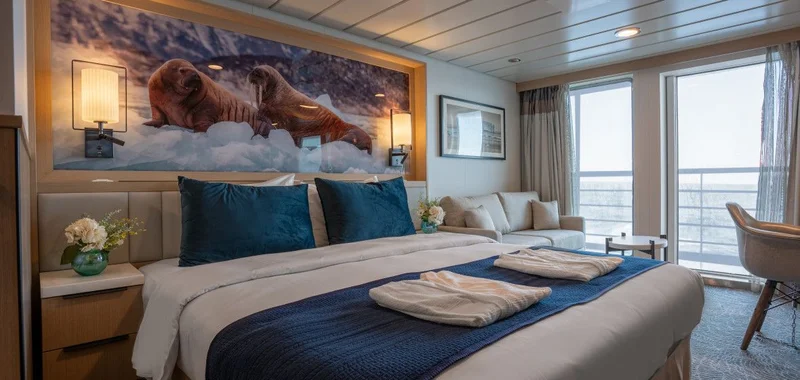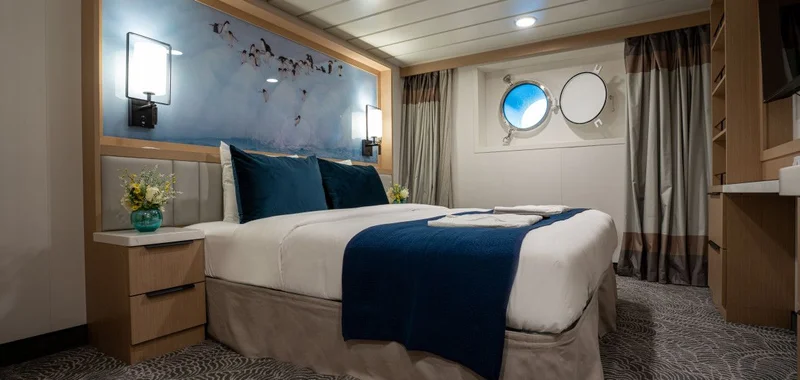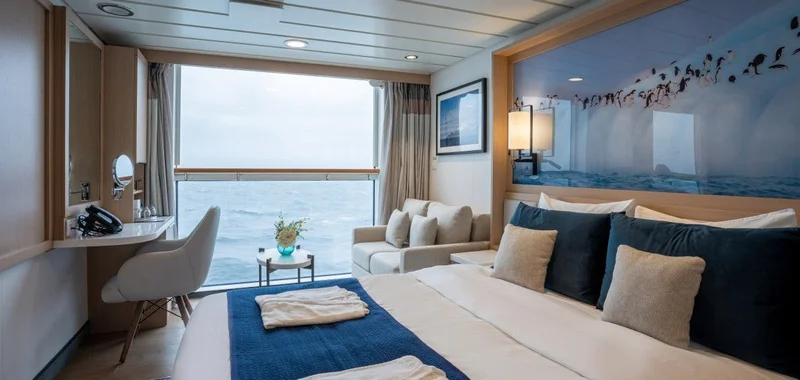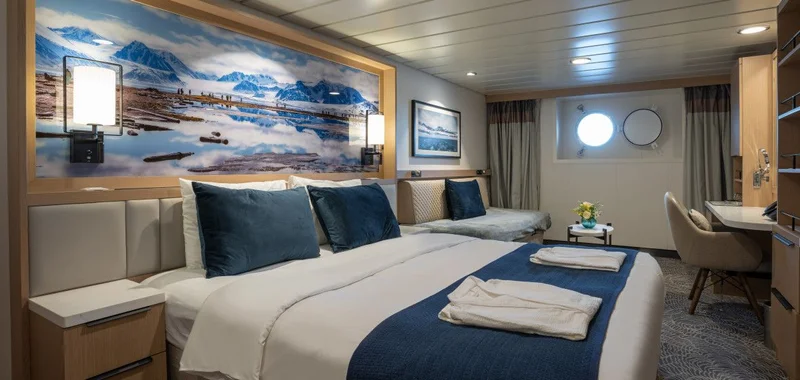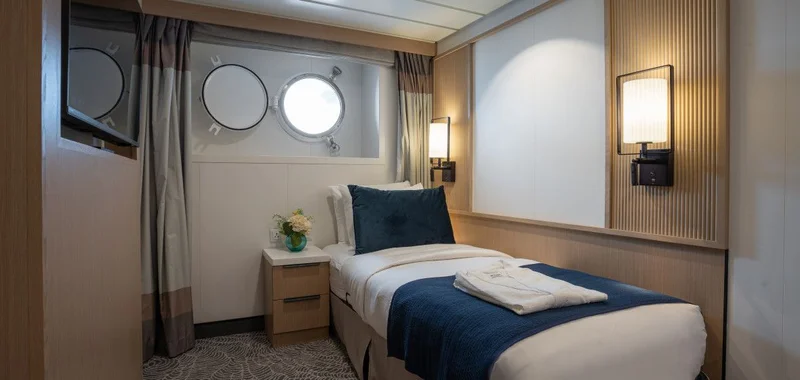Ocean Albatros | Cruise Ship Antarctica
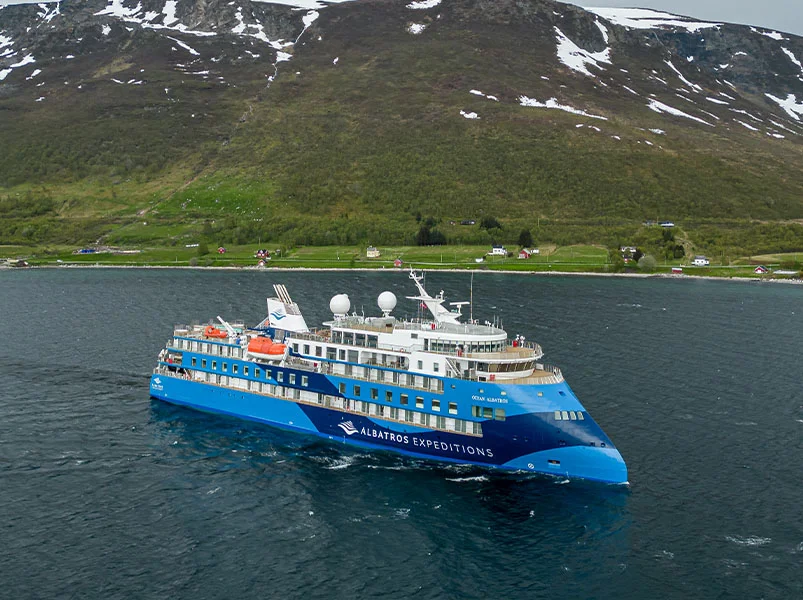

Overview
The Ocean Albatros is utilized for a wide range of expedition cruise destinations, encompassing Antarctica, the Arctic, and several other captivating points in between.
Featuring a combined total of 94 cozy staterooms and suites, all boasting unobstructed ocean views, with a majority including private balconies, the Ocean Albatros has emerged as a highly favored expedition cruise ship globally. Similar to its counterpart, the Ocean Victory, it presents two restaurants, a wellness center, an Albatros Nordic Bar, an outdoor deck dining area, a modern lecture lounge, and other cutting-edge amenities.
The ship's environmental impact is significantly reduced, with over 50% less carbon emissions compared to traditional expedition vessels, embodying exceptional eco-friendliness through the Green Initiative Program.
This guarantees utmost comfort and sustainability for guests. Distinguishing itself from the Ocean Victory, the Ocean Albatros also provides a distinctive panoramic sauna and even more specialized cabins for solo travelers without additional charges.
Ocean Albatros technical details
Ocean Albatros possesses the topmost Polar code rating of 6 and Ice class 1A, making it the perfect small-ship cruising option owing to its robust build and X-Bow(r)-Infinity design.
This design ensures exceptional stability in turbulent conditions, enabling seamless travel even on towering waves. Furthermore, the ship holds a Solas 2012 classification, ensuring a secure journey back to port if needed.
This vessel represents a fresh wave of energy-efficient ships, boasting 4 diesel engines and 2 electric engines, all managed electronically to enhance both speed and fuel efficiency.
Services
- Restaurant
- Bar
- Library
- Observation Area
- Lecture Room
- Albatros Ocean Boutique
- Reception
- Medical Clinic
- Fitness
- Albatros Polar & Spa
- Infinity Pool
- Jacuzzi
- Panorama Sauna
- Mudroom
- Zodiac embarking
- Kayak platform
- Toilet
- Elevator
- Shower
- Stairs
Facilities
- Arnarulunnguaq Observation Deck
- Vitus Bering Lecture Hall
- Jens Munk Restaurant
- Fitness
- Polar Spa
- Sauna
- Roald Amundsen Lounge Bar
- Albatros Boutique
- BBQ Deck
- Peter Freuchen Library
- Fridtjof Nansen Restaurant
- Otto Nordenskjold Mudroom
- Knud Rasmussen Observation Lounge
- Leif Den Lykkelige Pool Deck and Bar
Gallery
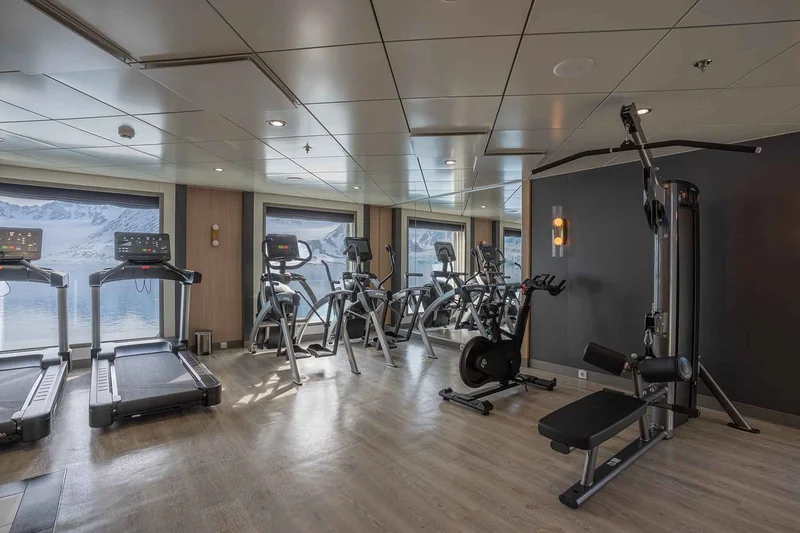
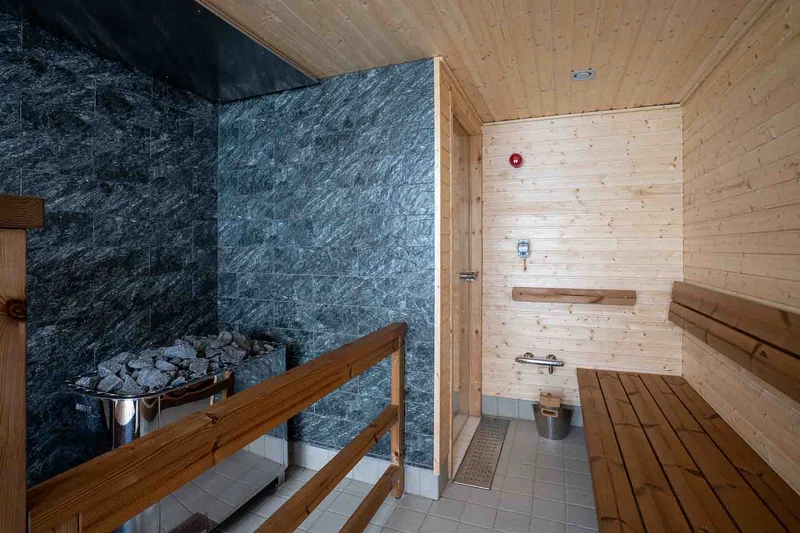
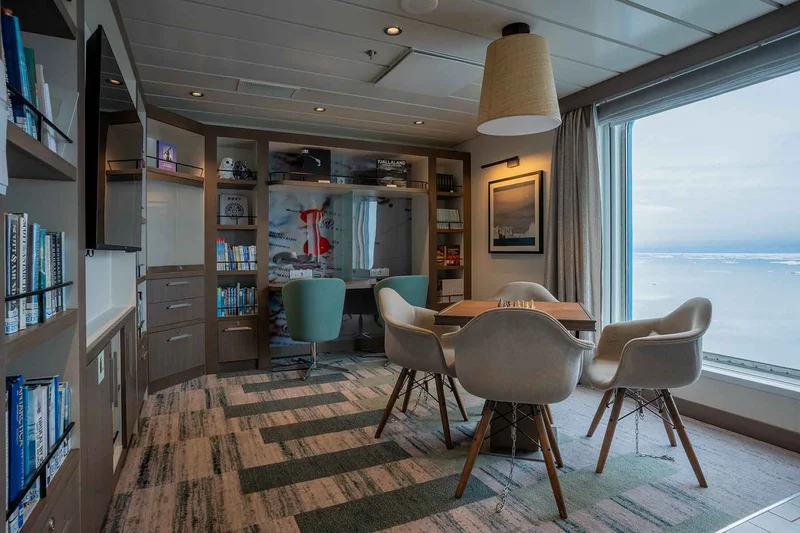
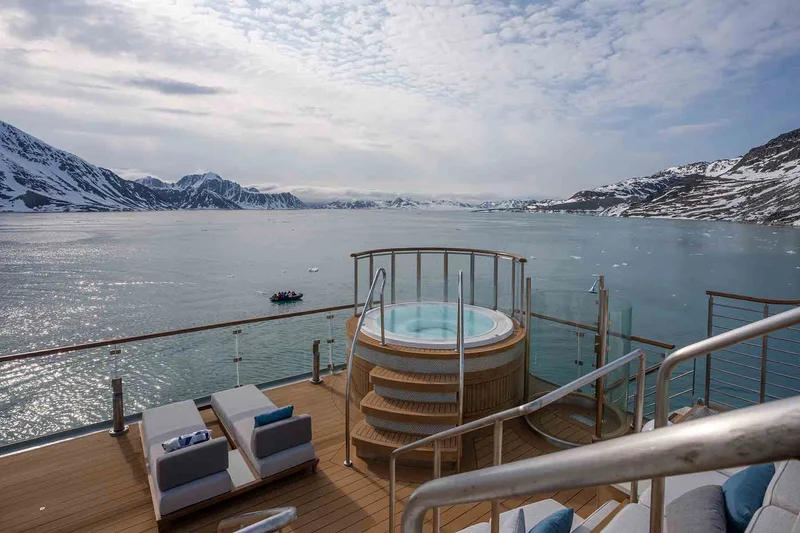
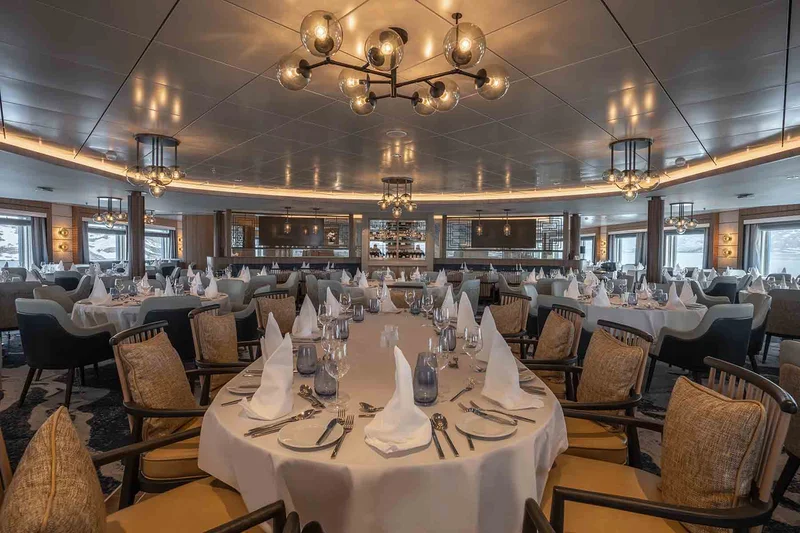
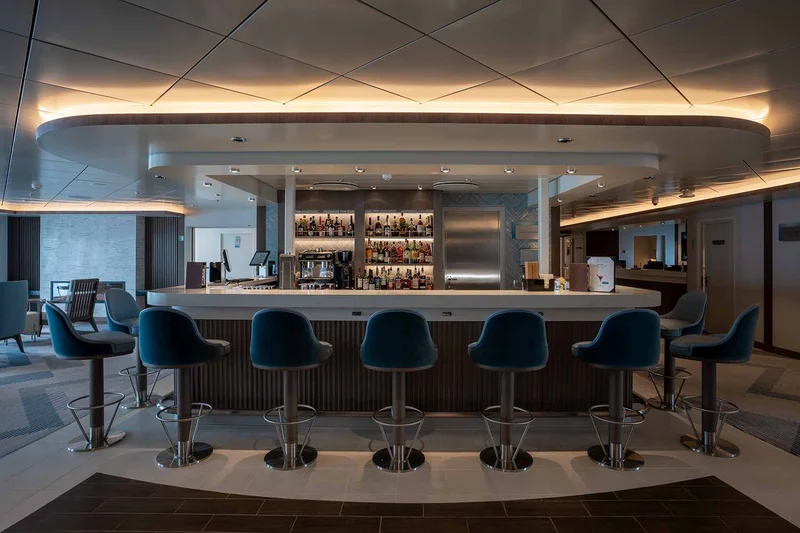
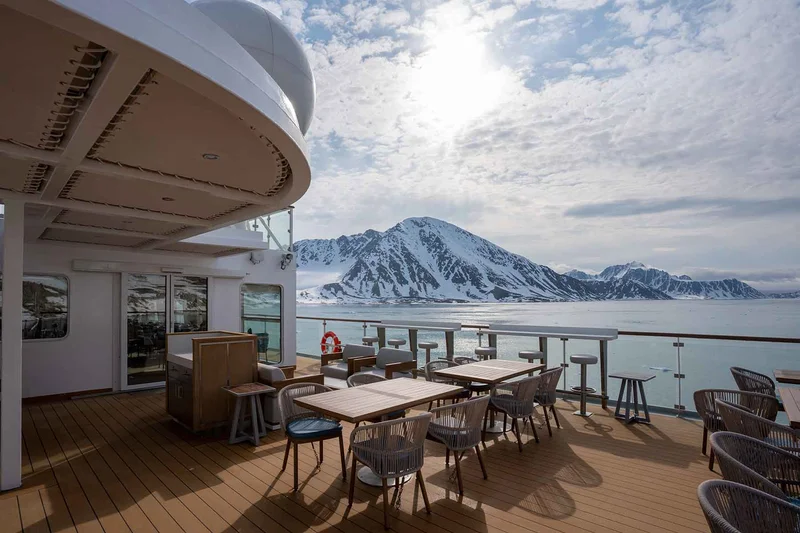
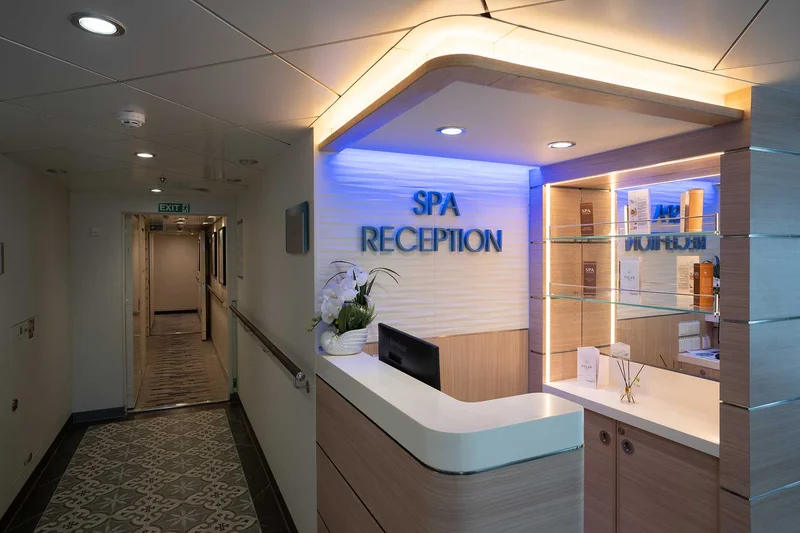
Cabins
Technical Specifications
- Staff and Crew: 100
- Guests: 189
- Length: 104.4 meters / 342 feet
- Breadth: 18.4 meters / 60.36 feet
- Draft: 5.1 meters / 16.73 feet
- Ice Class: Polar Code 6 (equivalent 1A)
- Cruising Speed: 14-15 Knots (max)
- Lifeboats: 2 Fully enclosed, 150-passenger capacity.
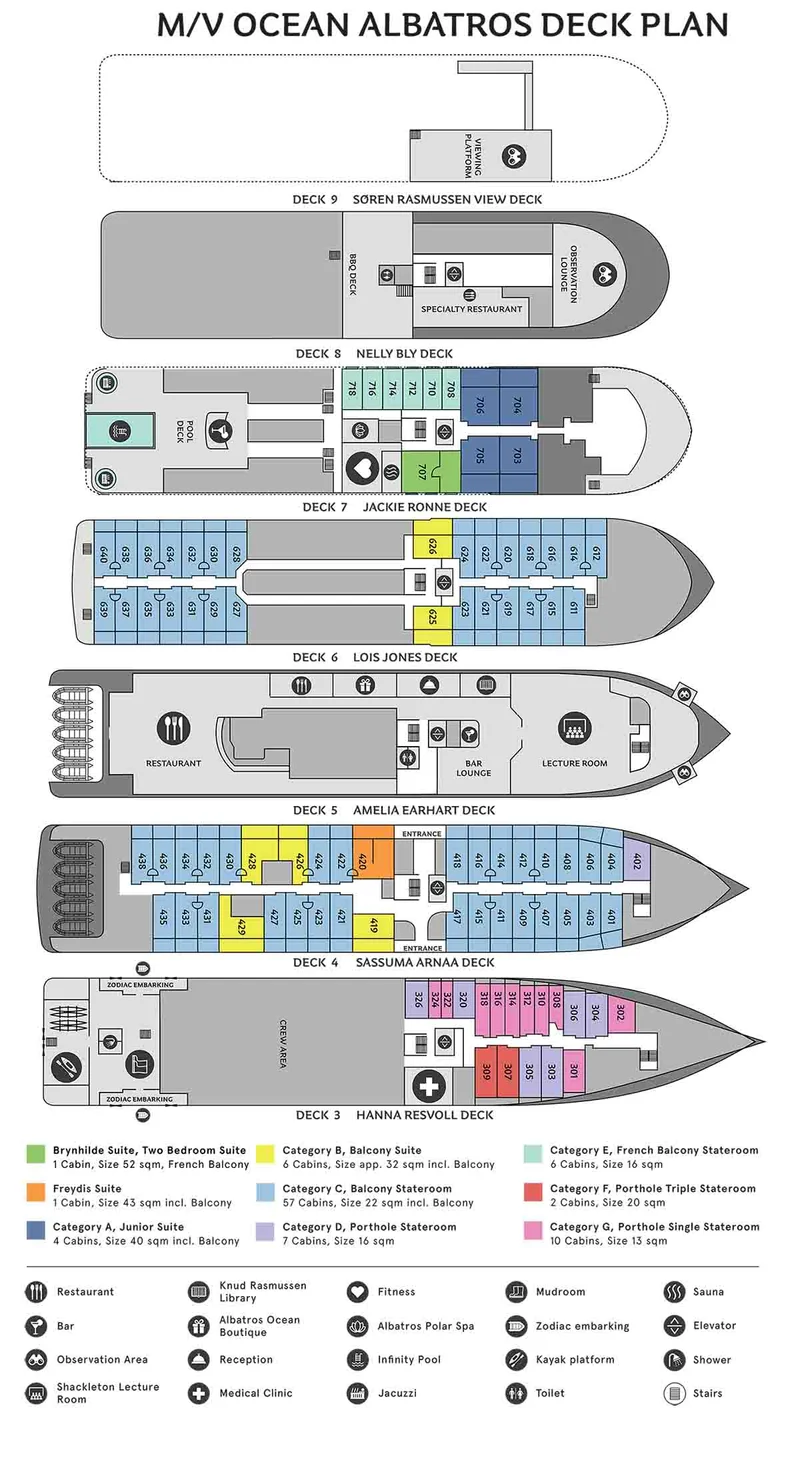
Itineraries
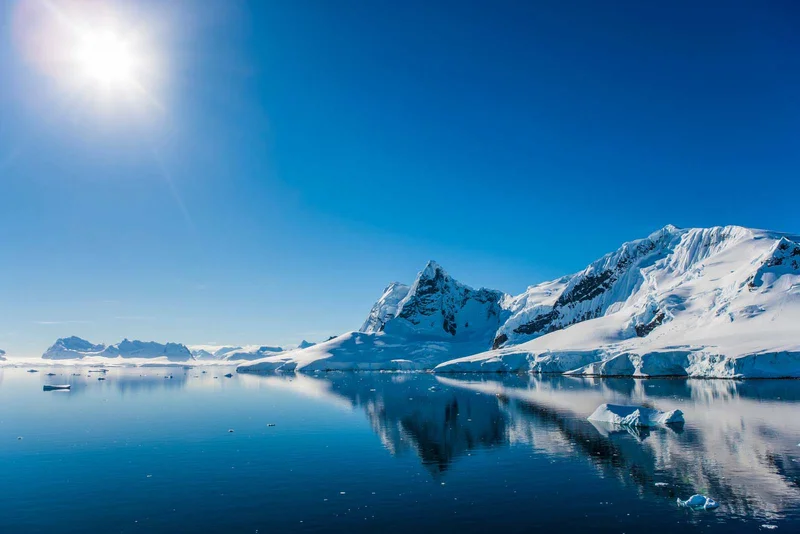
- Day 1 : Ushuaia, Argentina, embarkation
- Day 2 - 3 : At Sea - Crossing the Drake Passage Southbound
- Day 4 - 6 : The Antarctic Peninsula
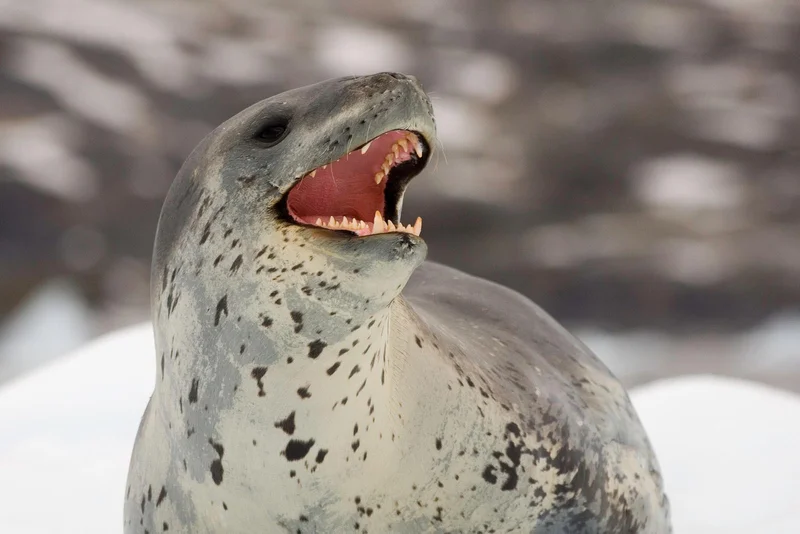
- Day 1 : Arrival Ushuaia, embarkation
- Day 2 & 3 : At sea - crossing the Drake Passage southbound
- Day 4 to 10 : The Antarctic Peninsula - Adventure awaits
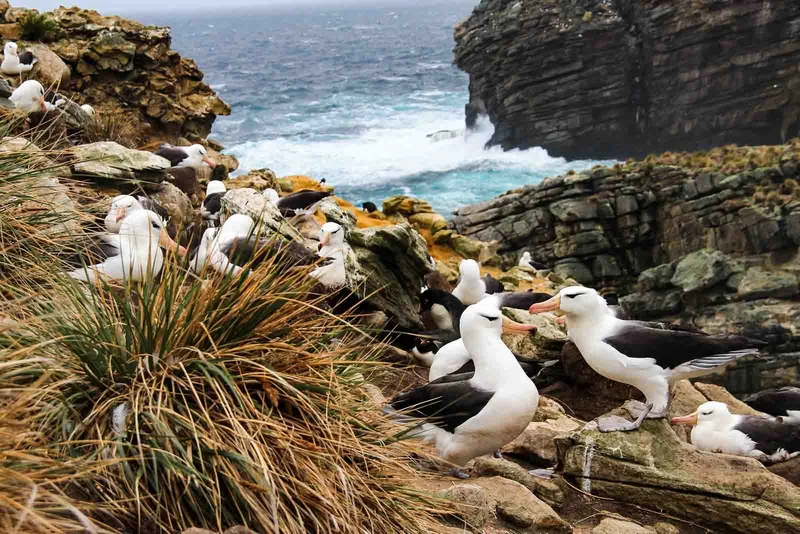
- Day 1 : Fly Copenhagen/Reykjavik to Kangerlussuaq, Embarkation
- Day 2 : Nuuk, Greenland
- Day 3 : Kangaamiut and Evighedsfjorden, Greenland
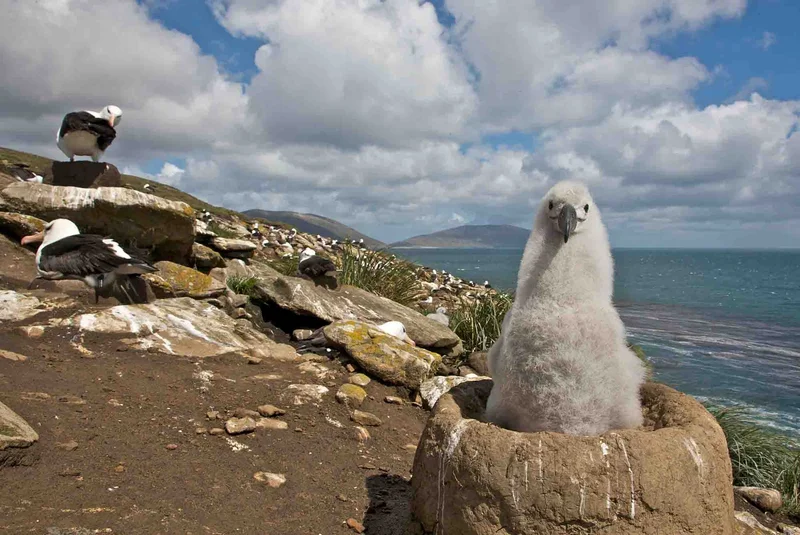
- Day 1 : Nuuk, Greenland - Embarkation
- Day 2 : Kangaamiut and Eighedsfjorden, Greenland
- Day 3 : At sea, crossing the Davis Strait
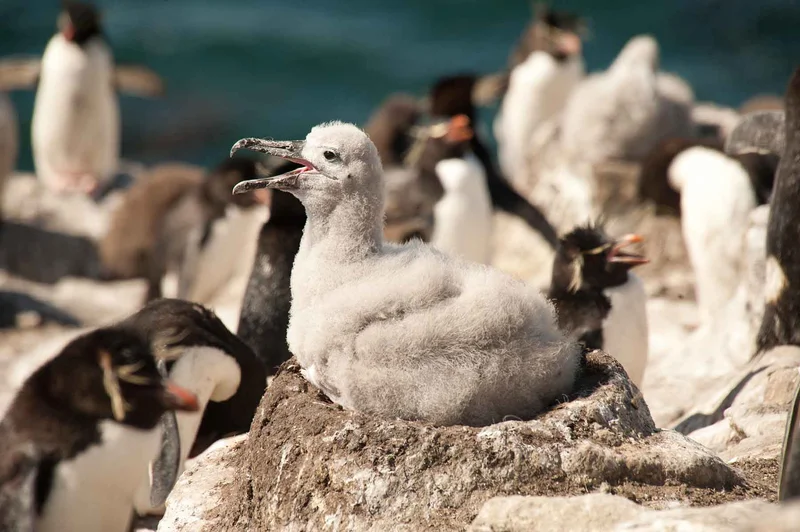
- Day 1 : Ushuaia & Beagle Channel
- Day 2 & 3 : Drake Passage
- Day 4, 5, 6 & 7 : Port Stanley & Falkland Islands
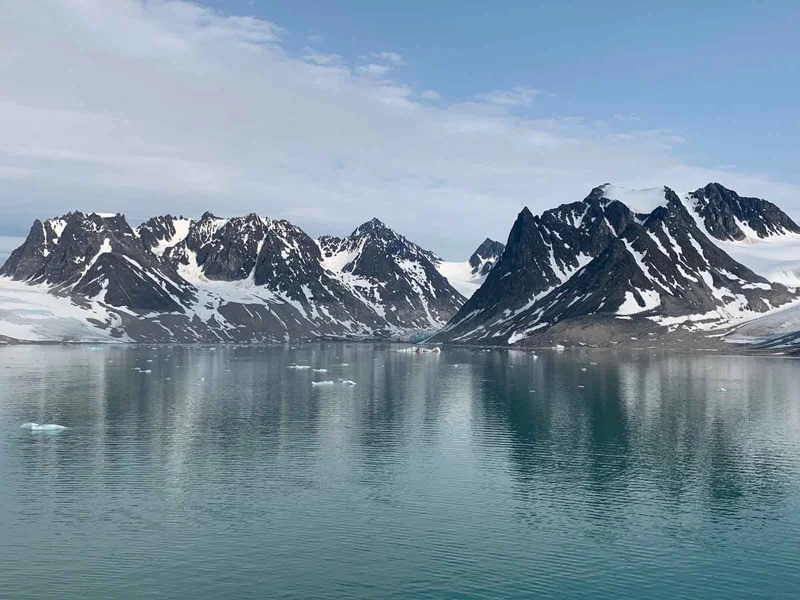
- Day 1 : Longyearbyen, Spitsbergen. Embarkation
- Day 2 & 3 : Northwest Spitsbergen
- Day 4 : Northeast Svalbard
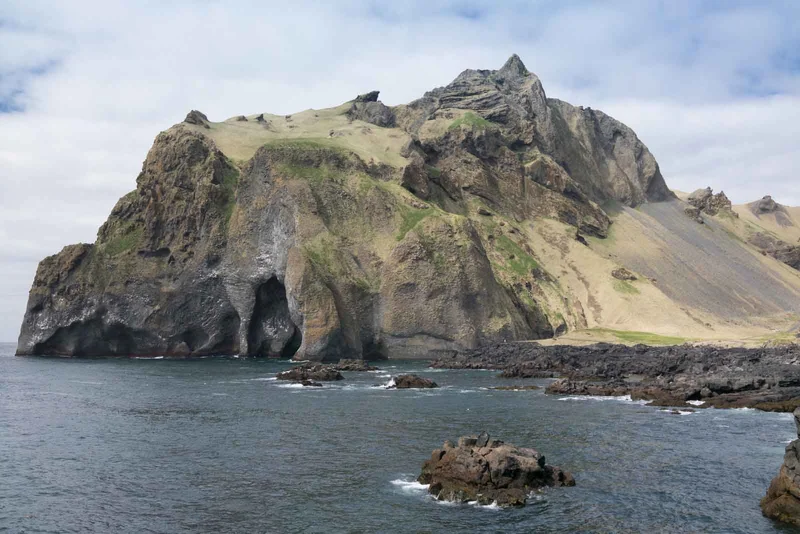
- Day 1 : Reykjavík, Iceland
- Day 2 : Crossing the Denmark Strait
- Day 3 : Tasiilaq, East Greenland
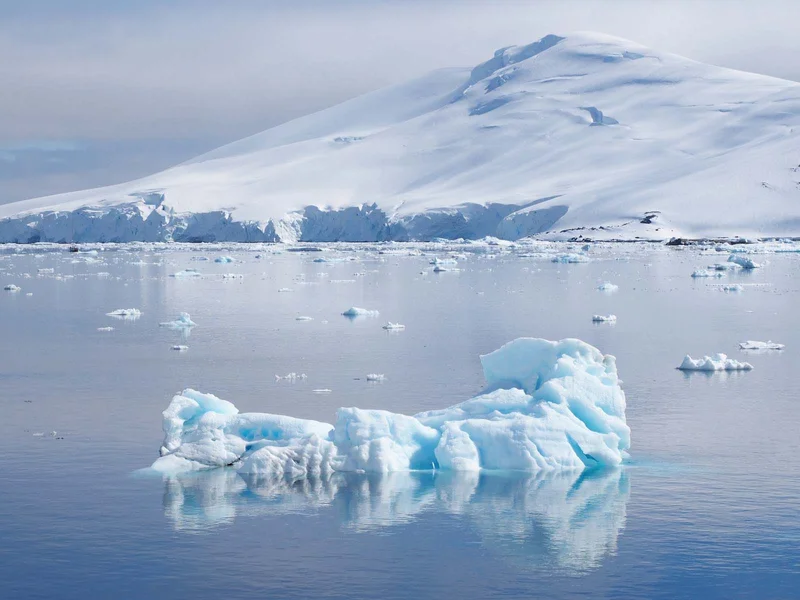
- Day 1 : Arrival in Ushuaia, embarkation
- Day 2 & 3 : At sea - crossing the Drake Passage southbound
- Day 4 to 7 : South Shetland Islands & the Antarctic Peninsula
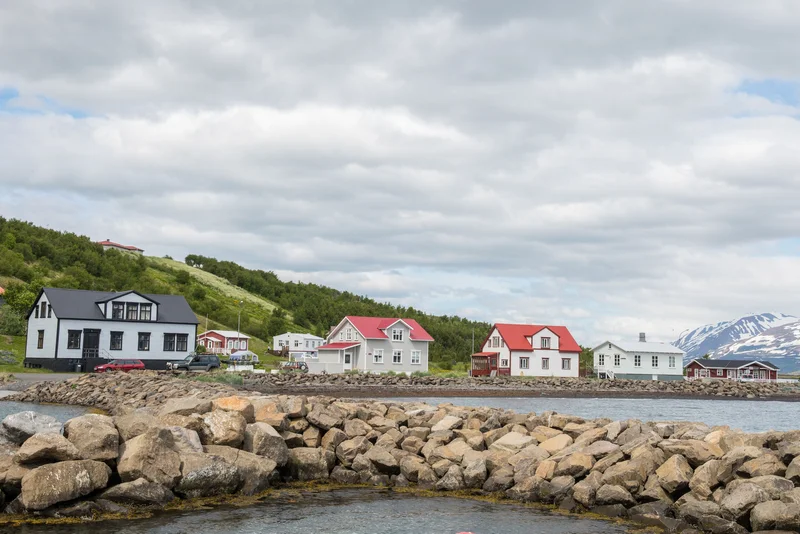
- Day 1 : Kangerlussuaq, Embarkation
- Day 2 : Kangaamiut and Evighedsfjorden
- Day 3 : Nuuk, Capital of Greenland
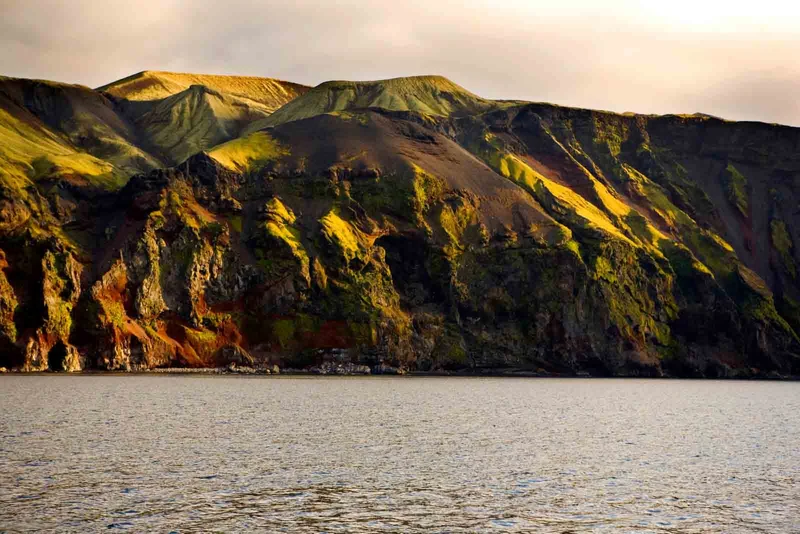
- Day 1 : Arrival Ushuaia, embarkation
- Day 2 & 3 : At sea - crossing the Drake Passage southbound
- Day 4 to 9 : The Antarctic Peninsula
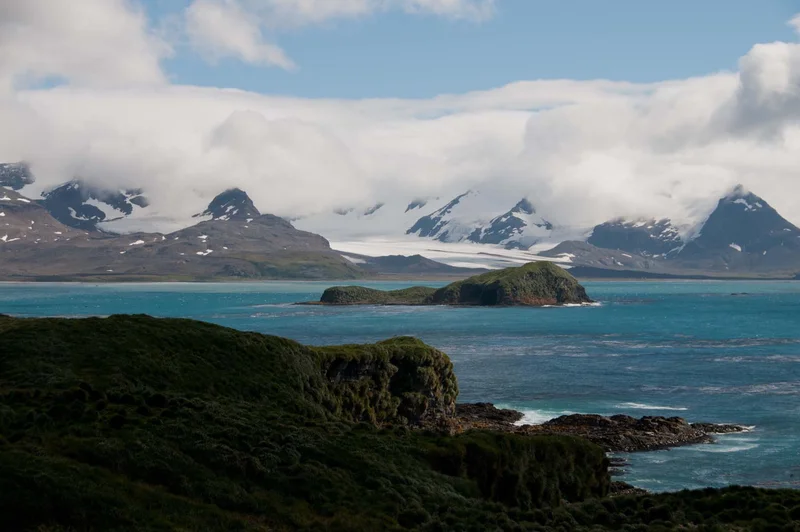
- Day 1 : Arrival and embarkation in Ushuaia
- Day 2 : At sea towards the Falkland Islands
- Day 3 - 4 : Falkland Islands, Visit Port Stanley
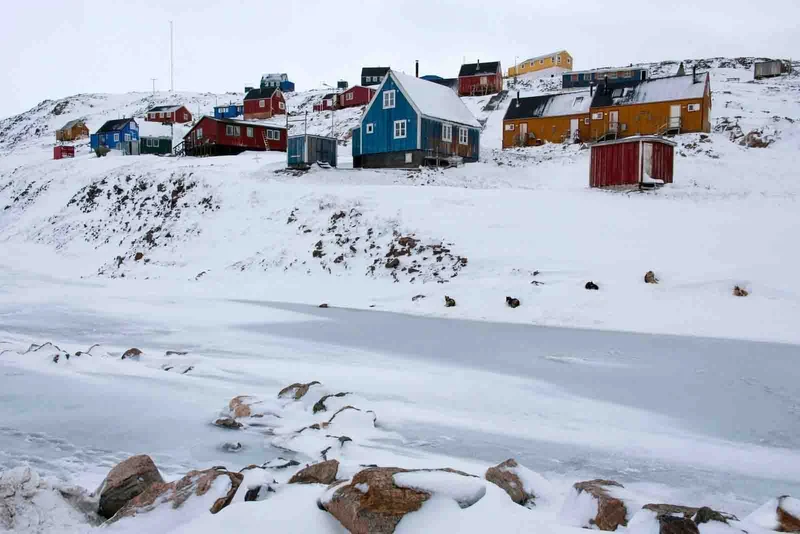
- Day 1 : Kangerlussuaq, Greenland
- Day 2 : Sisimiut, Greenland's Second City
- Day 3 : Qeqertarsuaq, Disko Island
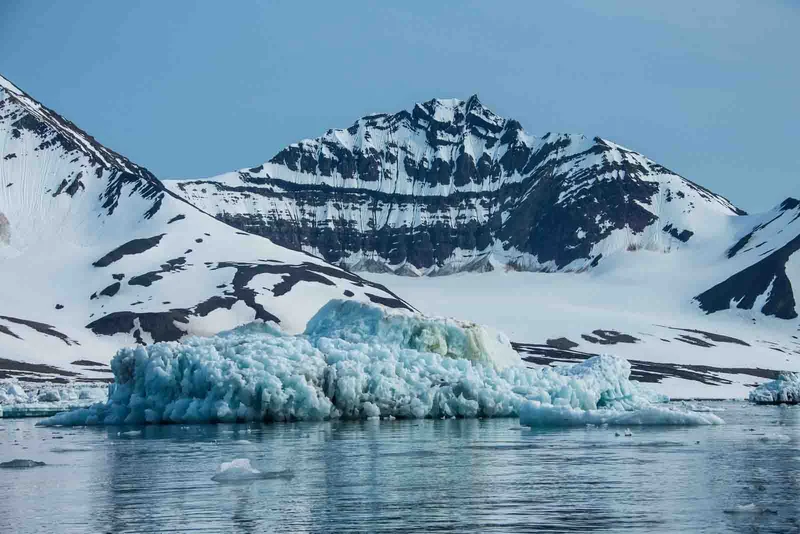
- Day 1 : Reykjavik
- Day 2 : At sea, en route to Siglufjörður
- Day 3 : Siglufjörður and Grímsey, Iceland
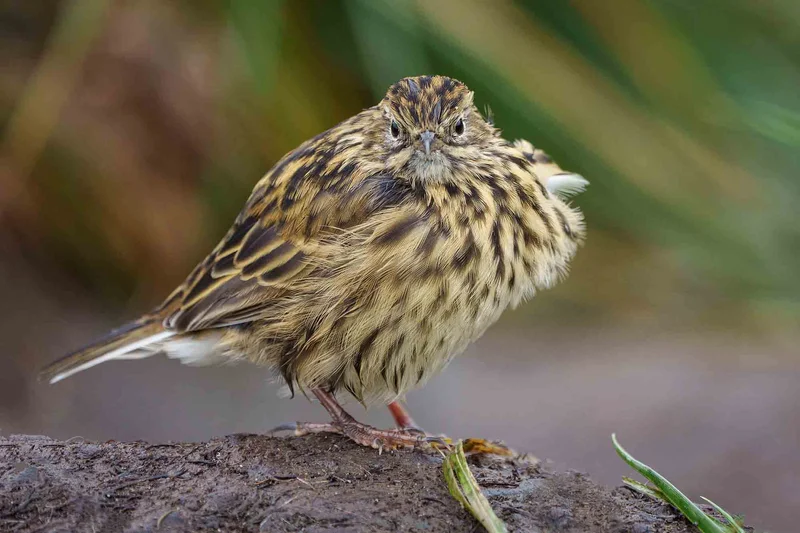
- Day 1 : Longyearbyen
- Day 2 : NY Alesund, NY London, & Lilliehook Glacier
- Day 3 : Smeerenburg & Ytre Norskoya
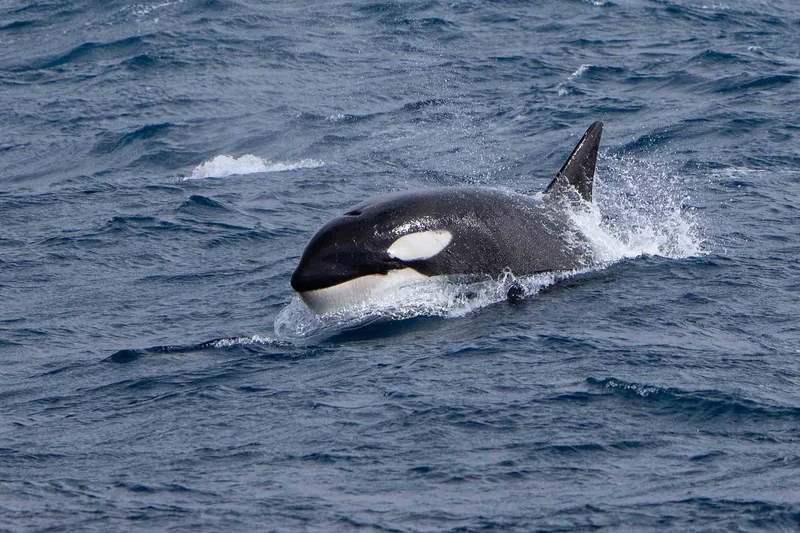
- Day 1 : Kangerlussuaq, Greenland - Embarkation
- Day 2 : Sisimiut - Greenland's second city
- Day 3 : Qeqertarsuaq, Disko Island

- Day 1 : Aberdeen, Scotland - Begin Your Adventure Here
- Day 2 : Lerwick, Shetland, Scotland
- Day 3 : Vágur, Faroe Islands
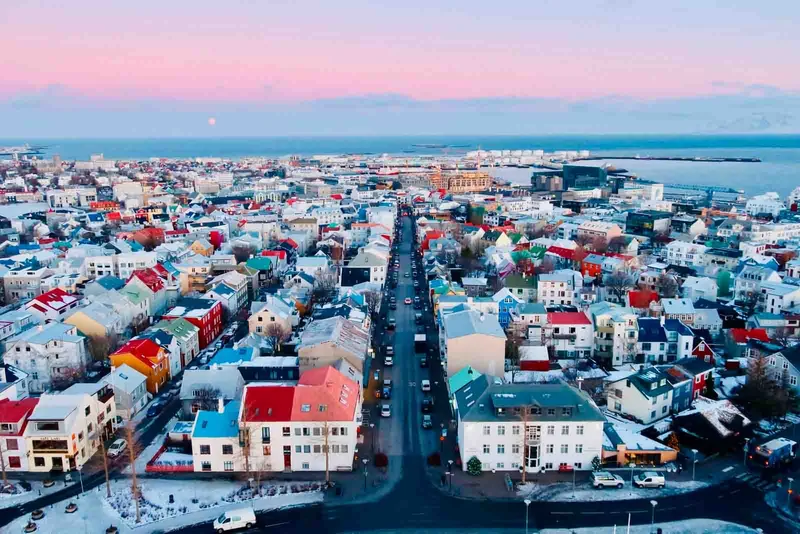
- Day 1 : Reykjavík, Iceland,
- Day 2 : At sea, crossing the Denmark Strait
- Day 3 : Kuummiut and Ikateq
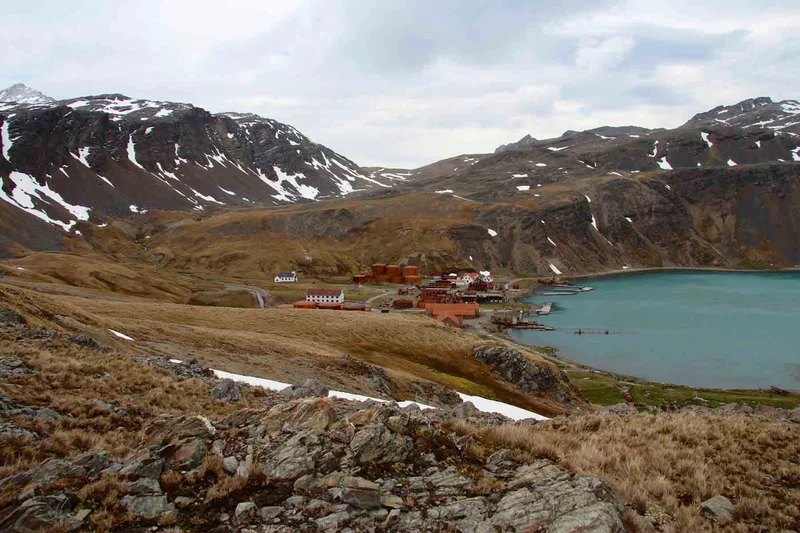
- Day 1 : Ushuaia & Beagle Channel
- Day 2 & 3 : Drake Passage
- Day 4 : South Shetland Islands

- Day 1 : Aberdeen - Embarkation
- Day 2 : Kirkwall, Orkney
- Day 3 : Lerwick and the Isle of Noss, Shetland
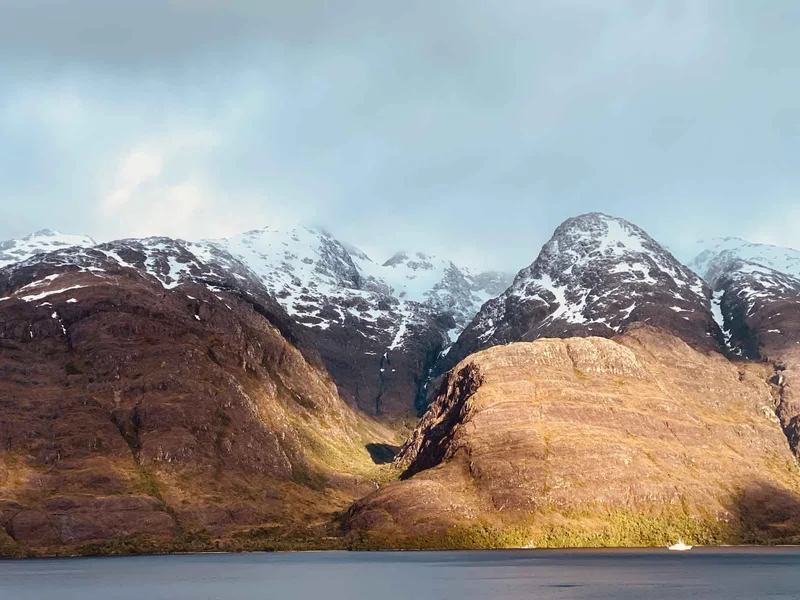
- Day 1 : Reykjavík, Iceland
- Day 2 : Crossing the Denmark Strait
- Day 3 : Tasiilaq, East Greenland
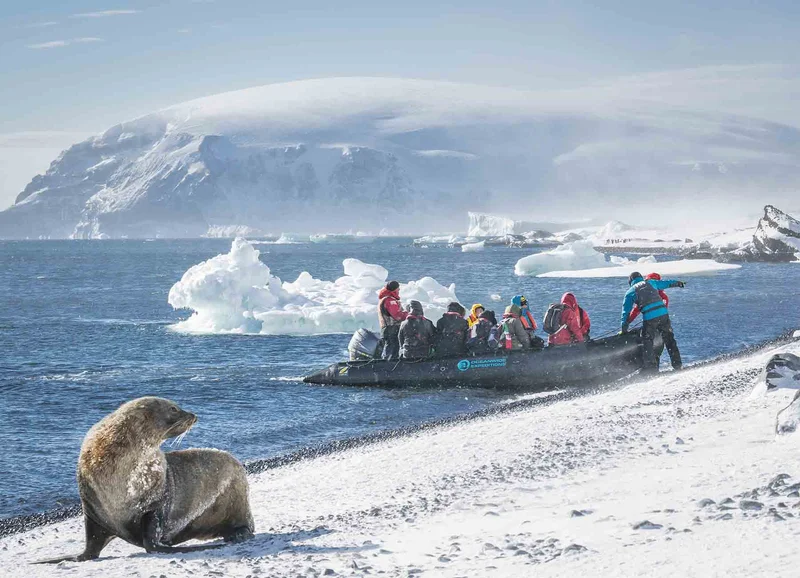
- Day 1 : Arrival and embarkation in Ushuaia
- Day 2 : At sea towards the Falkland Islands
- Day 3 & 4 : Falkland Islands, visit Port Stanley

- Day 1 : Lisbon, Portugal - Embarkation
- Day 2 : Leixões/Porto, Portugal
- Day 3 : A Coruña, Galicia, Spain

- Day 1 : Longyearbyen, Spitsbergen. Embarkation
- Day 2 to 5 : South and East Svalbard
- Day 6 : Longyearbyen, Spitsbergen. Disembarkation
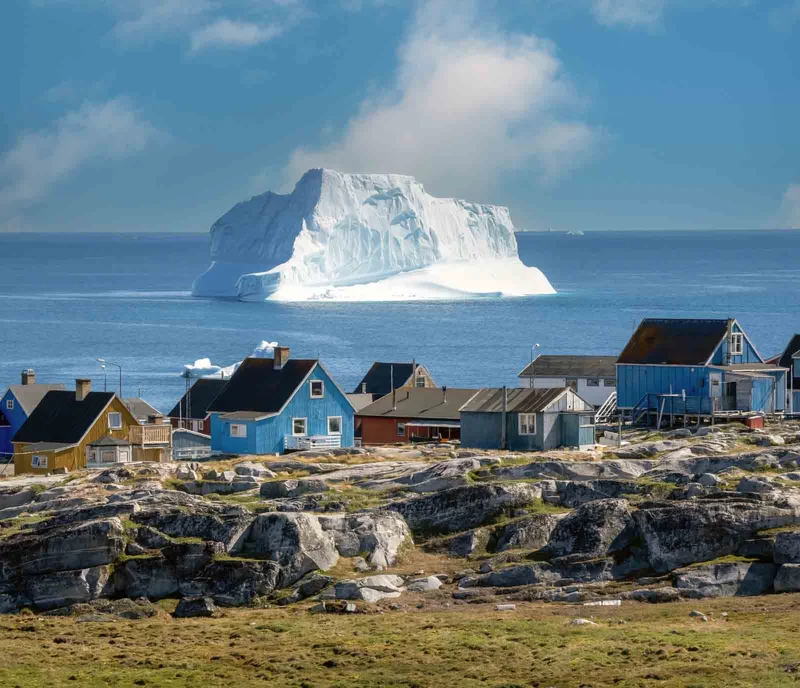
- Day 1 : Reykjavik
- Day 2 : Crossing the Denmark Strait
- Day 3 : Tasiilaq, East Greenland
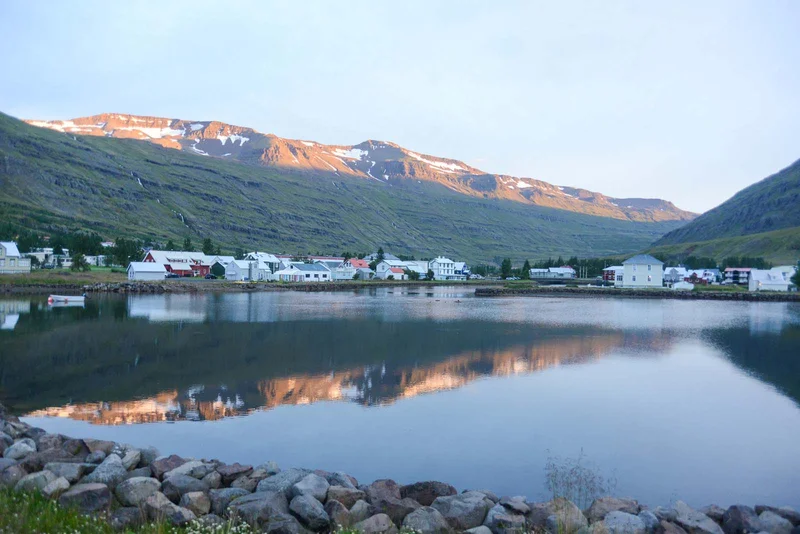
- Day 1 : Reykjavik, Iceland
- Day 2 : At sea, crossing the Denmark Strait
- Day 3 : Eclipse Day, Blosseville Coast, East Greenland
Rates
| Cabin | 10 Days | 12 Days | 13 Days | 18 Days | 19 Days |
|---|---|---|---|---|---|
| Family Suite Antarctica 2026 - 2027 | $19,695.00 | - | - | - | $45,895.00 |
| Premium Suite Antarctica 2026 - 2027 | $20,295.00 | - | - | - | $45,895.00 |
| Junior Suite Antarctica 2026 - 2027 | $20,295.00 | - | - | - | $40,795.00 |
| Balcony Suite Antarctica 2026 - 2027 | $16,795.00 | - | - | - | $31,895.00 |
| Balcony Stateroom Antarctica 2026 - 2027 | $11,495.00 | - | - | - | $26,795.00 |
| Albatros Stateroom Antarctica 2026 - 2027 | $10,295.00 | $12,655.00 | $14,555.00 | $19,825.00 | - |
| French Balcony Stateroom Antarctica 2026 - 2027 | $10,995.00 | - | - | - | $25,495.00 |
| Triple Stateroom Antarctica 2026 - 2027 | $9,895.00 | - | - | - | $22,295.00 |
| Single Stateroom Antarctica 2024 - 2025 | $10,095.00 | - | - | - | $23,595.00 |
Departures
Why travel with us?
Would you like to know why booking with us is the best choice?
Discover the BenefitsFrecuently Asked Questions
Which destinations does Ocean Albatros cover?
How is Ocean Albatros committed to environmental sustainability?
Ocean Albatros follows eco-friendly practices, such as low-impact shore landings, waste reduction measures, and advanced propulsion systems to minimize its environmental footprint.
